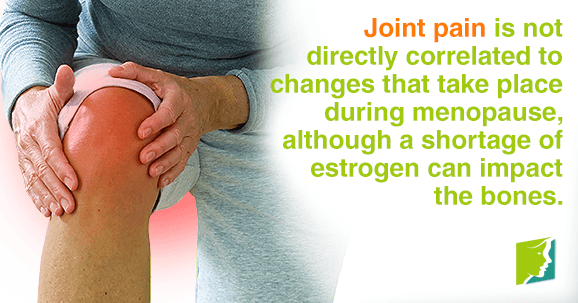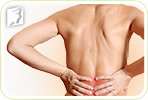Joint pain is characterized by discomfort or pain that originates in a person's joints, which is the point where two bones meet. Scientifically, joint pain is called arthritis or arthralgia. Usually, mild joint pain can be treated without the help of a doctor, but it is a good idea to seek medical attention if joint pain becomes moderate to severe.
How Is Joint Pain Related to Menopause?
Joint pain is not directly correlated to changes that take place during menopause, such as changing estrogen levels, although a shortage of estrogen can impact the bones. However, a woman is more likely to experience joint pain with age. Menopausal symptoms such as hot flashes, night sweats, feeling depressed, and trouble concentrating are all correlated to join pain in menopausal women.
See a doctor if:
Your joint pain becomes intense, includes swelling, redness, and tenderness, the area becomes deformed, or you are unable to use the joint.
Feeling unhealthy, exercise, using painkillers, being overweight, and having a history of sexual abuse are all factors that are associated with joint pain.
How Can I Reduce Joint Pain during Menopause?
Fact:
The most common treatment for menopause symptoms is hormone replacement therapy (HRT). While HRT is usually the most effective treatment for menopausal symptoms that are caused by decreased hormone levels - such as hot flashes, night sweats, mood swings, and vaginal dryness - HRT does not work as well on joint pain. This is because changing hormone levels do not cause joint pain directly.
Join pain can be relieved by:
Taking an over-the-counter painkiller
Reducing activities that trigger or worsen joint pain
Using an ice pack or heating pad on painful area for around 20 minutes a couple of times each day
Practicing low-impact exercise such as water-aerobics, swimming, or yoga
Losing weight if you are overweight or obese, or maintaining a healthy weight, can also help joint pain. This is because excess weight puts unnecessary stress on joints. Losing weight if you are obese can also increase mobility, which can help you to exercise, which can further help your joints.
What Are Some Additional Treatment Options for Dealing with Joint Pain?
If your joint pain is bad enough, it is a good idea to see a doctor. There are a range of medicines a doctor can prescribe. These include painkillers, anti-inflammatory medication, and other more specialized treatments that can be rubbed into the skin, injected into the body, or taken as a pill.
In the most severe cases, surgery is recommended. Surgeries for arthritis including replacing joints or fusing joints together. Read about steps to get rid of menopausal joint pain.
Sources
- Mayo Clinic Staff. (2013). Joint Pain. Retrieved October 1, 2015, from http://www.mayoclinic.org/symptoms/joint-pain/basics/definition/sym-20050668
- Mayo Clinic Staff. (2014). Arthritis. Retrieved October 1, 2015, from http://www.mayoclinic.org/diseases-conditions/arthritis/basics/definition/con-20034095
- Mitchell E.S. & Woods N.F. (2010). Pain symptoms during the menopausal transition and early postmenopause. Climacteric: The Journal of the International Menopause Society, 13(5), 467-478. doi: 10.3109/13697137.2010.483025




